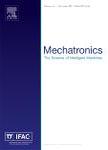版权所有:内蒙古大学图书馆 技术提供:维普资讯• 智图
内蒙古自治区呼和浩特市赛罕区大学西街235号 邮编: 010021

作者机构:Vienna Univ Technol Automat & Control Inst Christian Doppler Lab Model Based Proc Control St Vienna Austria Vienna Univ Technol Automat & Control Inst Vienna Austria
出 版 物:《MECHATRONICS》 (机械电子学)
年 卷 期:2020年第71卷
页 面:102423-102423页
核心收录:
学科分类:0808[工学-电气工程] 0809[工学-电子科学与技术(可授工学、理学学位)] 08[工学] 0802[工学-机械工程] 0811[工学-控制科学与工程]
基 金:Christian Doppler Research Association Austrian Federal Ministry for Digital and Economic Affairs National Foundation for Research, Technology and Development voestalpine Stahl GmbH TU Wien Bibliothek
主 题:Distributed-parameter system Disturbance rejection Periodic signals Active vibration control Steel industry
摘 要:The active rejection of harmonic disturbances is of great importance in many industrial applications. For instance, transverse vibrations of steel strips in hot-dip galvanizing lines entail an inhomogeneous zinc coating of the final product. Controlling the vibrations of these steel strips is particularly complicated because their direct measurement at the relevant location is not available. More specifically, the disturbance input, the displacement measurement, the electromagnetic actuator which acts as control input, and the system output to be controlled are all located at different positions along the steel strip. The control scheme proposed in this work minimizes the harmonic steady-state response of the system output to be controlled. In contrast to a state-space approach, the method does not utilize a high-dimensional state observer, and requires only modest computational resources during online operation. Furthermore, negative effects in the closed-loop system due to observation or control spillover are effectively avoided. The developed harmonic disturbance rejection scheme is validated by experiments conducted on a test rig that mimics the conditions from an industrial hot-dip galvanizing line.